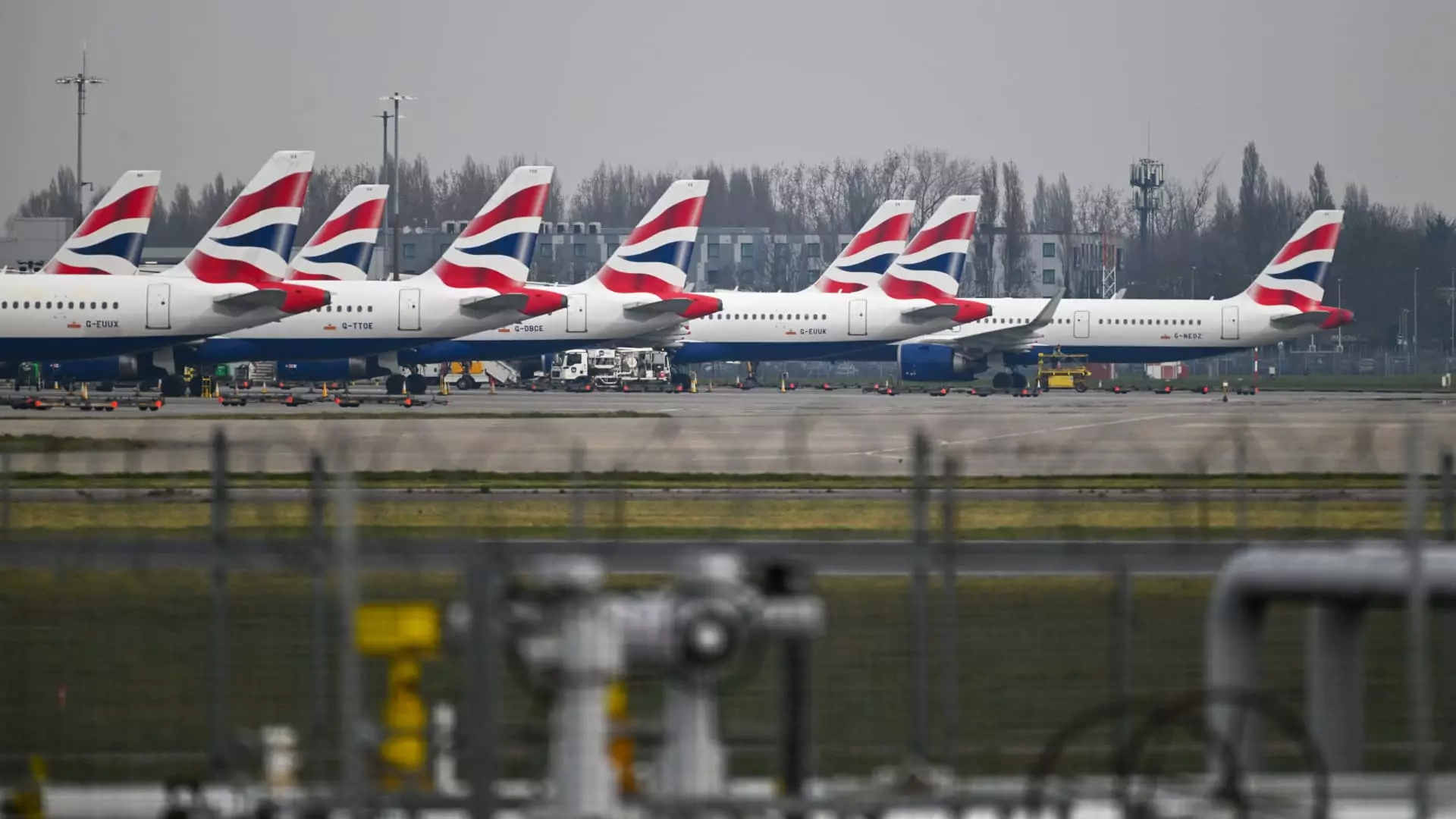In an unprecedented disruption, Heathrow Airport, Europe’s busiest travel hub, fell silent on Friday following a major fire at a nearby electrical substation. This incident caused a power outage that resulted in the cancellation of over 800 flights, impacting the travel plans of tens of thousands. With only limited services resuming late Friday and hopeful proclamations for a “full operation” slated for the following day, the scene at Heathrow was chaotic and frustrating. Travelers were left stranded, unsure when they might be able to return to the skies.
The gravity of the situation cannot be overstated. Major cities around the globe rely on Heathrow as their primary gateway into Europe, making the consequence of this incident not only a local issue but an international concern. Alarmingly, hundreds of flights were already in the air when the closure was announced; many were forced to divert to alternative airports. Airlines scrambled to find ways to accommodate passengers, but the reality is that countless individuals faced disrupted itineraries and unforeseen expenses.
Infrastructure Vulnerability Exposed
This catastrophic event has raised serious questions about the resilience of infrastructure at critical national gateways like Heathrow. After all, we’re not talking about a minor glitch; the entirety of London’s air traffic was effectively grounded due to a failure to safeguard against such a foreseeable calamity. Ed Miliband, the U.K. Energy Minister, described the fire as unprecedented in its scale, raising red flags about the country’s preparedness for disasters that would impact national infrastructure.
Willie Walsh, CEO of the International Air Transport Association, did not mince words when he criticized the airport’s infrastructure. Describing it as a “total planning failure,” Walsh highlighted the excessive reliance on a single power source. This catastrophic lack of foresight raises alarms about the potential risks moving forward and the influence of political and regulatory decisions that prioritize short-term savings over long-term sustainability.
Passenger Rights and Corporate Accountability
Within the chaotic narrative of this fire, a pressing issue emerges: who bears the responsibility for compensating inconvenienced passengers? Major airlines, including British Airways and American Airlines, have begun offering “flexible options” for rescheduling. However, these proactive measures should lead to a broader conversation about accountability when disruptions result from failures in fundamental infrastructure.
Citi’s recent note explicitly hinted that due to the fire being an outside interference, airlines might not be legally obligated to compensate passengers for their losses. This raises an unsettling issue; if airlines are left to carry the cost burden of poor planning by airport authorities, it generates a disparity where no accountability exists for the real source of the problem. Walsh’s comments underscore the need for a more equitable distribution of passenger care responsibilities when infrastructure failures arise.
Long-term Implications for Travel and Economy
The ramifications of the Heathrow power outage extend far beyond inconvenienced travelers. The airport plays a crucial role in the global economy, handling over 1.4 million tonnes of cargo annually. The fire disrupted not just passenger travel but also the movement of essential goods, showcasing the extent of its importance. Anita Mendiratta, a travel and tourism advisor, emphasized the broad implications, which could ripple through the economy in unanticipated ways.
With over 4,000 tons of cargo making its way through Heathrow every day, any disruption can lead to delays in supply chains, affecting everything from perishable goods to electronics. This incident sends a sobering message to policymakers and business leaders: our infrastructure needs decisive oversight and innovation to ensure its reliability. Flying in and out of Heathrow is not merely a logistical concern; it represents a lifeline for trade and connectivity across continents.
A Call for Change
As we step back and assess this incident, it’s clear that this isn’t merely a situation of “bad luck.” It is a wake-up call that demands immediate attention to infrastructure planning and risk management policies. The question remains: how long will it take for policymakers to recognize that our infrastructure must be fortified against failures of its current systems?
While most passengers will inevitably move on from this incident, the lessons it imparts must linger, pushing the political discourse toward long-overdue reforms. Stronger regulations and a commitment to building resilient systems can prevent the vulnerability that led to this chaos. It’s time to stand up and demand that our airports and governmental bodies prioritize sustainability, reliability, and strategic planning over quick fixes that leave us exposed.

